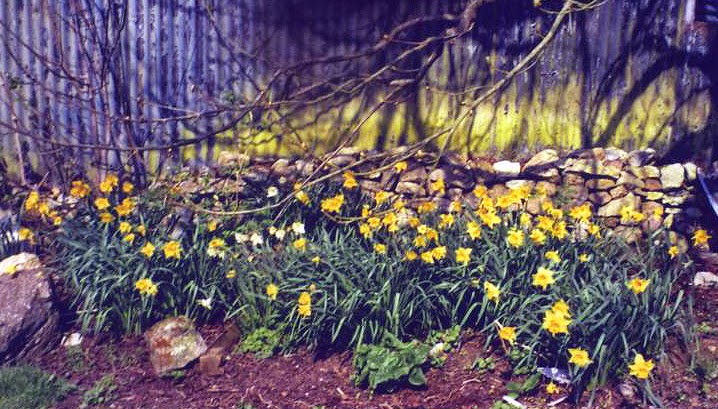March 17th is the
national day of the Republic of Ireland. Some things you may not know
about Ireland:

Ireland is the
only country in the world that has a musical instrument – the harp
– as its national symbol.
The longest place
name in Ireland is Muckanaghederdauhaulia, in County Galway. The
name means “marsh of the pigs between two seas”. There is a
stream in County Galway with an even longer name:
Sruffaunoughterluggatoora.
Ireland was the
first place to establish a duty-free airport - Shannon, in 1947.
Mary Robinson was
the first female President of Ireland. She was succeeded by Mary
McAleese. This is the only instance in the world where one female
President was replaced by another.
The Irish flag was
created in 1848. The Orange stripe represents Irish Protestants, Green is for Irish Catholics and white is for the hope that peace
might eventually be reached between them.
-
Most people in
Ireland speak English, but there is also an Irish language. In
Irish, there is no word for "yes" or "no" so if
an Irish speaker is asked if they walked, they would reply "walked"
or "didn't walk". There are also three different sets of
numbers - one for maths, one for counting people, and one for
counting animals.
There are more
people claiming Irish descent outside Ireland than are living in
Ireland. These include US President Barack Obama, who is of Irish
descent on his mother's side.
While on the
subject of US Presidents, an Irish architect designed the White House. His name was James Hoban. He also built it - twice. After the
White House was destroyed in 1814, he built it a second time.
There is a legend
of an Irish wizard and chieftain who was known by the name of
Abhartach who was one of several reputed in folklore to drink Blood.
Since Bram Stoker was an Irishman who never visited Transylvania in
his life, it has been suggested that it is an Irish, rather than a
Romanian tale which inspired Dracula.
Before you go:
Check out some other things I've written.
Death and Faxes
 Several women have been found murdered - it looks like the work of a ruthless serial killer. Psychic medium Maggie Flynn is one of the resources DI Jamie Swan has come to value in such cases - but Maggie is dead, leaving him with only the telephone number of the woman she saw as her successor, her granddaughter, Tabitha Drake.
Several women have been found murdered - it looks like the work of a ruthless serial killer. Psychic medium Maggie Flynn is one of the resources DI Jamie Swan has come to value in such cases - but Maggie is dead, leaving him with only the telephone number of the woman she saw as her successor, her granddaughter, Tabitha Drake.
Tabitha, grief-stricken by Maggie's death and suffering a crisis of confidence in her ability, wants nothing to do with solving murder cases. She wants to hold on to her job and find Mr Right (not necessarily in that order); so when DI Swan first contacts her, she refuses to get involved.
The ghosts of the victims have other ideas. They are anxious for the killer to be caught and for names to be cleared - and they won't leave Tabitha alone. It isn't long before Tabitha is drawn in so deeply that her own life is on the line.
Paperback - CreateSpace or Amazon
Or get the E-book: Amazon Kindle (Where you can use the "Look Inside" function and read the first few pages for free!)
Glastonbury Swan
Every few weeks, there is a mysterious death in Glastonbury. They seem completely unrelated - an apparent suicide, a hit and run, a drug overdose, a magic act which goes horribly wrong - but is that what the killer wants people to think?
The police are certainly convinced - but one of the victims is communicating to medium Tabitha Drake that the deaths are linked.
Who is killing all these people and why?
This is what Tabitha has to figure out - before it is too late to save someone very dear to her.
Jigsaw
Within these covers you will find murder, mayhem, ghosts, romance, dungeons and dragons and alien vampire bunnies.
Paperback CreateSpace or Amazon
E-book Amazon Kindle
New! From A Jack To A King
A royal palace is burning. The King and Queen are dead. The only hopes for an ancient dynasty flee to England for their lives.
A boy runs from his mother and the people he believes want to mutilate him, and vanishes, seemingly forever.
Gary Winchcombe, the experimental "super-cop" pursues a notorious gang of bank robbers, and starts to discover that his friends and neighbours have secrets he never could have imagined.
Tod Reynard wants to turn his life around. When he meets and falls in love with the beautiful Jade, he knows she might just be the one to help him change his life for the better. He cannot possibly know just how much.
When Jade's twin sister Gloria is kidnapped, old rivalries must be put aside and new associations formed in order to save Gloria's life and restore the rightful order of things.
I have plenty more stories to tell, but I don't know yet which will win the race to the end of the pipeline. If you'd like to know:
Read short stories and book excerpts on My writing blog
Follow me on Twitter: @JulieHowlin







.jpg)













